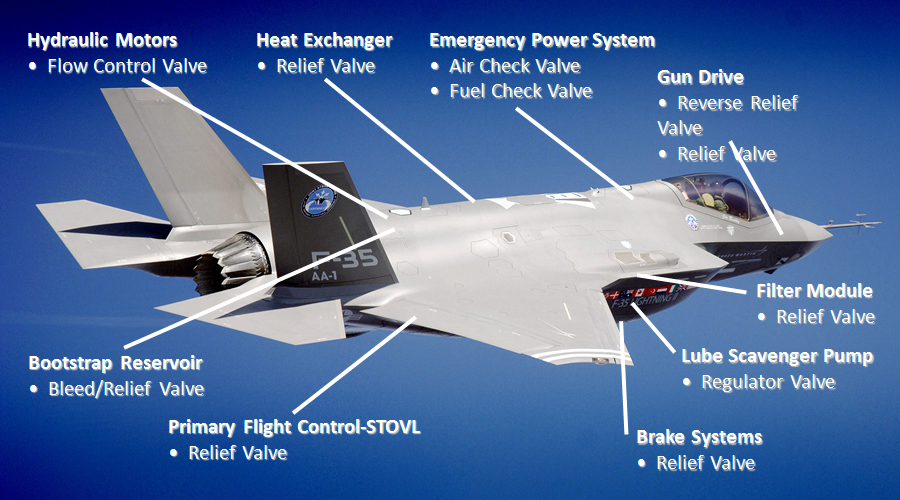
In modern aircraft, some of the places that hydraulics come into play include primary flight controls, flap/slat drives, landing gear, nose wheel steering, thrust vectoring systems, flaperons, cargo doors and emergency hydraulic-driven electrical generators. Military aircraft also use hydraulics on gun drives, weapons-bay doors, and hydraulic-motor-driven components because of the power density of hydraulics.
Factors that must be addressed on military aircraft include pressure conditions (both internal and ambient), temperature extremes, speed, vibration levels, G-loading, reliability, fluid compatibility, leaks, cost, noise, and weight.
While most commercial aircraft typically operate at hydraulic pressures at 3,000 or 5,000 psi, military planes primarily operate at 4,000 or 5,000 psi. Military aircraft often use closed-loop liquid cooling systems for electronics. Ausco produces high precision valves to control fluid temperatures across various systems with high specificity. Ausco has optimized our performance around tight performances in these performance-sensitive applications.
Peak Aircraft performance can be the difference between mission success or failure.
Ausco components are designed to measure the performance of our customer’s components and systems by reducing leaking, increasing flow for a given size, tighter repeatability bands and less hysteresis than comparable compounds. This synergy gives our customers a competitive advantage.
